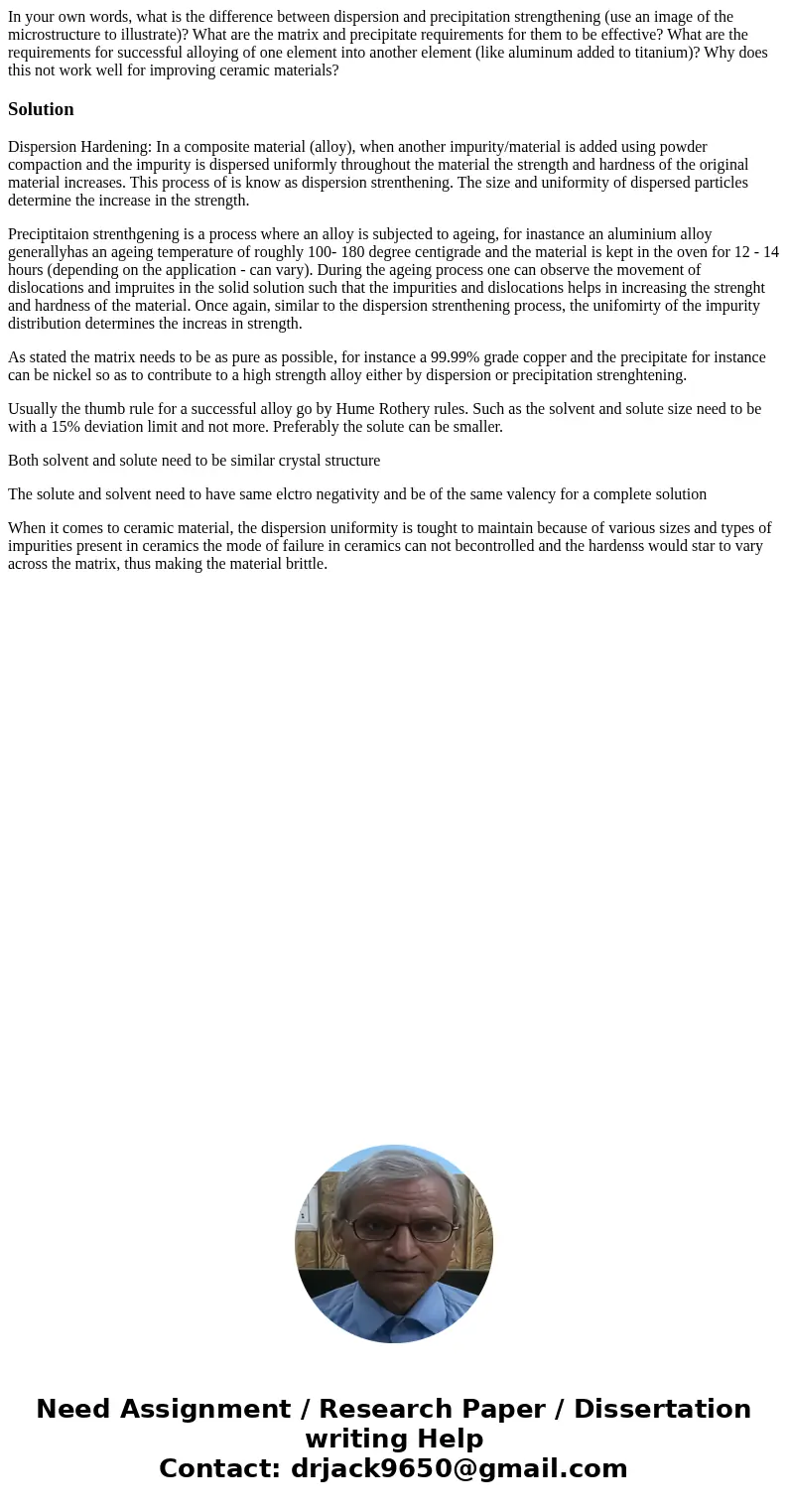In your own words what is the difference between dispersion
Solution
Dispersion Hardening: In a composite material (alloy), when another impurity/material is added using powder compaction and the impurity is dispersed uniformly throughout the material the strength and hardness of the original material increases. This process of is know as dispersion strenthening. The size and uniformity of dispersed particles determine the increase in the strength.
Preciptitaion strenthgening is a process where an alloy is subjected to ageing, for inastance an aluminium alloy generallyhas an ageing temperature of roughly 100- 180 degree centigrade and the material is kept in the oven for 12 - 14 hours (depending on the application - can vary). During the ageing process one can observe the movement of dislocations and impruites in the solid solution such that the impurities and dislocations helps in increasing the strenght and hardness of the material. Once again, similar to the dispersion strenthening process, the unifomirty of the impurity distribution determines the increas in strength.
As stated the matrix needs to be as pure as possible, for instance a 99.99% grade copper and the precipitate for instance can be nickel so as to contribute to a high strength alloy either by dispersion or precipitation strenghtening.
Usually the thumb rule for a successful alloy go by Hume Rothery rules. Such as the solvent and solute size need to be with a 15% deviation limit and not more. Preferably the solute can be smaller.
Both solvent and solute need to be similar crystal structure
The solute and solvent need to have same elctro negativity and be of the same valency for a complete solution
When it comes to ceramic material, the dispersion uniformity is tought to maintain because of various sizes and types of impurities present in ceramics the mode of failure in ceramics can not becontrolled and the hardenss would star to vary across the matrix, thus making the material brittle.

 Homework Sourse
Homework Sourse